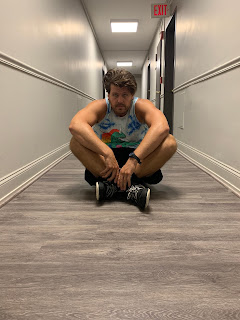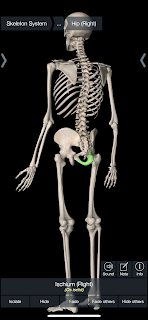Can you stand back up from the floor? Can you stand back up after a fall? What if you hurt your arms in said fall? Are you still strong and capable enough to get back up? And does it even matter?
The first reason it may matter to you is because of a study done in 2012 that linked people's ability to sit and stand from the floor with all-cause mortality. People who were able to sit on the floor and stand up with less limb support were found to live longer. On average people who had more trouble getting up were twice as likely to die in the six years following the study!
Here is a link to a news article that describes the test:
The first reason it may matter to you is because of a study done in 2012 that linked people's ability to sit and stand from the floor with all-cause mortality. People who were able to sit on the floor and stand up with less limb support were found to live longer. On average people who had more trouble getting up were twice as likely to die in the six years following the study!
Here is a link to a news article that describes the test:
http://discovermagazine.com/2013/nov/05-sit-down
For those more science-minded, here is a link to the study:
https://journals.sagepub.com/doi/abs/10.1177/2047487312471759
SO you’re still thinking to yourself, “Well I never want to sit on the floor anyway, so why does this pertain to me?” How about a beach chair or a car that’s low to the ground (think sports car)? What if you need something in a floor level cabinet or under the bed? Are your legs strong and mobile enough to get you into and out of these difficult positions? Training to sit and stand from the floor would equip you with the physical capacity to perform in all these other situations!
And the most important reason for being capable of sitting on the floor is because of what evolution tells us about ourselves. We evolved from animals that sit and lay on the floor comfortably. Early humans were capable of sitting and sleeping on the floor comfortably for extended periods of time. Being able to manipulate your body into comfort while on the floor is part of being human.
So what do you do to facilitate your body’s natural ability to sit on the floor comfortably and consequently be able to get up?
Here are a few basic stretches and strengthening drills to get you to that point:
Wall Butterfly Stretch
Straddle Capsular Hip CARs
90/90 Switch Lv1
Kneel to Half Kneel
Low Lunge Lift Off
These exercises are only the beginning! There are hundreds of ways to get up and down from the floor! There are thousands of deficits that could be causing you pain or the inability to do this natural maneuver! Your best bet is to get assessed and then start your quest!
I suggest you speak with a fitness professional, preferably a Functional Mobility Specialist before starting on your journey to regain/improve/master this basic human movement!
Thanks for reading,
Steve Cornely
For those more science-minded, here is a link to the study:
https://journals.sagepub.com/doi/abs/10.1177/2047487312471759
SO you’re still thinking to yourself, “Well I never want to sit on the floor anyway, so why does this pertain to me?” How about a beach chair or a car that’s low to the ground (think sports car)? What if you need something in a floor level cabinet or under the bed? Are your legs strong and mobile enough to get you into and out of these difficult positions? Training to sit and stand from the floor would equip you with the physical capacity to perform in all these other situations!
And the most important reason for being capable of sitting on the floor is because of what evolution tells us about ourselves. We evolved from animals that sit and lay on the floor comfortably. Early humans were capable of sitting and sleeping on the floor comfortably for extended periods of time. Being able to manipulate your body into comfort while on the floor is part of being human.
So what do you do to facilitate your body’s natural ability to sit on the floor comfortably and consequently be able to get up?
Here are a few basic stretches and strengthening drills to get you to that point:
Wall Butterfly Stretch
Straddle Capsular Hip CARs
90/90 Switch Lv1
Kneel to Half Kneel
Low Lunge Lift Off
These exercises are only the beginning! There are hundreds of ways to get up and down from the floor! There are thousands of deficits that could be causing you pain or the inability to do this natural maneuver! Your best bet is to get assessed and then start your quest!
I suggest you speak with a fitness professional, preferably a Functional Mobility Specialist before starting on your journey to regain/improve/master this basic human movement!
Thanks for reading,
Steve Cornely
www.triadwellnessphilly.com
IG: @stephenjcornely
FB: Triad Wellness Philly
















